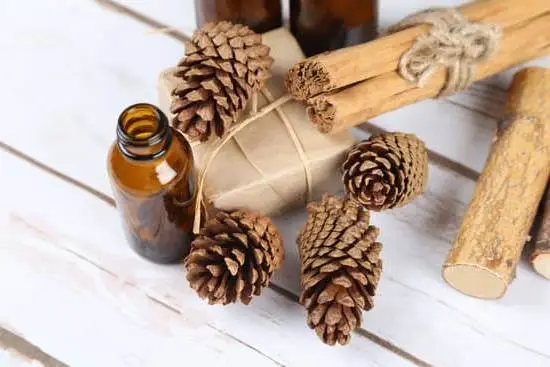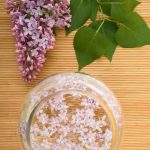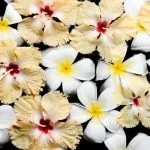Where are your pulse points for aromatherapy? Aromatherapy is a holistic healing treatment that uses natural plant extracts to promote health and well-being. The practice involves applying essential oils to various pulse points on the body, where they can be easily absorbed for therapeutic benefits. In this article, we will explore the significance of aromatherapy on pulse points and how it can enhance your overall wellness.
Aromatherapy has been used for centuries as a natural remedy for various ailments, and it is particularly effective when applied to pulse points. These are specific areas on the body where you can feel your pulse, such as the wrists, neck, and temples. When essential oils are applied to these areas, they can be quickly absorbed into the bloodstream, allowing their healing properties to take effect.
Understanding the benefits of aromatherapy on pulse points is crucial for maximizing its effects. From stress relief and relaxation to improved circulation and mental clarity, each pulse point offers unique benefits when targeted with the right essential oils.
In the following sections, we will delve deeper into the major pulse points on the body, how to apply aromatherapy for maximum effect, and which essential oils work best for different pulse points. So sit back, relax, and let’s embark on a journey to discover the power of aromatherapy on your pulse points.
Understanding the Benefits of Aromatherapy on Pulse Points
Aromatherapy has long been used as a natural remedy for various ailments, and its benefits extend to our pulse points. Understanding the benefits of aromatherapy on pulse points can help us maximize its healing effects. When applied to these specific areas of the body, essential oils have the ability to promote relaxation, relieve stress, enhance focus, alleviate pain, and even improve overall well-being.
There are several benefits to incorporating aromatherapy into our pulse point routine. Firstly, the use of essential oils on pulse points can promote relaxation and reduce stress levels.
Whether it’s through inhalation or absorption, certain scents such as lavender or chamomile have calming effects that can help ease anxiety and improve sleep quality. In addition to this, applying essential oils to pulse points can also enhance one’s mood and emotional well-being by stimulating the release of endorphins in the body.
Identifying the major pulse points on the body is crucial when it comes to reaping the benefits of aromatherapy. The main pulse points that are commonly used for applying essential oils include the temples, wrists, behind the ears, inside elbows, neck, and ankles.
These areas are known for their abundant blood flow and proximity to nerve endings which allow for quick absorption and distribution of the essential oil properties throughout the body. By understanding how essential oils work in conjunction with these pulse points, individuals can fully harness their therapeutic potential for both physical and mental health improvements.
- Benefits of incorporating aromatherapy into your daily routine
- Promotes relaxation and reduces stress levels
- Enhances mood and emotional well-being
Identifying the Major Pulse Points on the Body
Pulse points are specific areas on the body where you can feel your heartbeat most strongly. These points are crucial for applying aromatherapy as they allow the essential oils to be quickly absorbed into the bloodstream, providing maximum benefits. Here are some of the major pulse points on the body:
- Temples: Located on either side of the forehead, right above the cheekbone.
- Neck: Found on either side of the neck, just below the jawline.
- Wrists: Positioned on the inside of each wrist, close to where you would check your pulse.
- Chest: Located in the center of the chest, between the breasts.
- Inner Elbows: Situated on the inside of each elbow, where you would feel for a pulse.
By understanding these key pulse points, you can effectively target them with aromatherapy to experience its full range of benefits.
It’s important to note that while these are some of the most commonly used pulse points for aromatherapy, there are many other smaller pulse points throughout the body that can also be utilized for essential oil application. Each individual may have unique preferences for which pulse points they find most effective for their aromatherapy practice.
How to Apply Aromatherapy to Pulse Points for Maximum Effect
Applying aromatherapy to pulse points is a simple yet effective way to benefit from the healing properties of essential oils. When applied correctly, the oils can be absorbed into the bloodstream through the skin and provide a range of therapeutic effects. In order to achieve maximum benefit, it is important to apply aromatherapy to pulse points in a strategic manner.
One of the most common pulse points for applying aromatherapy is the wrist. This area is easily accessible and allows for quick absorption of the essential oils into the bloodstream. Another popular pulse point is located behind the ear, where the skin is thin and there are multiple blood vessels close to the surface. Additionally, the temples, neck, and inside of elbows are also effective pulse points for aromatherapy application.
To apply aromatherapy to these pulse points, simply place a small amount of your chosen essential oil onto your fingertips and then gently massage it into the selected area. It’s important not to use too much oil, as excessive amounts can cause skin irritation or an overwhelming scent. A few drops are usually sufficient for each application.
| Pulse Point | Recommended Essential Oils |
|---|---|
| Wrist | Lavender, Rosemary, Peppermint |
| Behind Ear | Sandalwood, Chamomile, Bergamot |
| Temples | Eucalyptus, Lemon, Frankincense |
| Neck | Ginger, Clary Sage, Ylang Ylang |
The Best Essential Oils for Different Pulse Points
Wrist and Inner Elbow
One of the most commonly used pulse points for aromatherapy is the wrist. When applying essential oils to this area, it is important to choose oils with calming and soothing properties. Some of the best essential oils for the wrist and inner elbow include lavender, chamomile, and bergamot. These oils can help reduce stress and anxiety, promote relaxation, and improve sleep quality.
Temples
Applying essential oils to the temples can help alleviate headaches, migraines, and tension. Peppermint oil is particularly effective for this pulse point due to its cooling and analgesic properties. Additionally, eucalyptus oil can also be beneficial for relieving sinus pressure and congestion when applied to the temples.
Neck
The neck is another pulse point where aromatherapy can be beneficial. Essential oils such as rosemary, peppermint, and eucalyptus are ideal for this area as they can help relieve muscle tension, improve circulation, and provide a sense of rejuvenation. However, it is important to dilute these oils properly before applying them to the skin to avoid irritation.
By understanding which essential oils are best suited for different pulse points on the body, individuals can effectively harness the benefits of aromatherapy for their overall well-being. Whether seeking relaxation, relief from physical discomfort, or an energy boost, incorporating essential oils into daily self-care routines can make a significant difference in one’s overall health and wellness.
Techniques for Massaging Aromatherapy Oils Into Pulse Points
Understanding the Importance of Massaging Aromatherapy Oils
When it comes to applying aromatherapy oils to pulse points, massaging the oils into the skin can significantly enhance the benefits of the treatment. The act of massaging helps to stimulate blood flow, which in turn aids in the absorption and distribution of the essential oils throughout the body. Additionally, massaging the pulse points can help to relieve tension and promote relaxation, making it an integral part of an aromatherapy routine.
Proper Technique for Massaging Pulse Points
To effectively massage aromatherapy oils into pulse points, it is important to use gentle and circular motions with your fingertips. Start by applying a small amount of your chosen essential oil to the pulse point and then gently massage it into the skin using light pressure.
Focus on each pulse point individually, taking your time to fully work the oil into the skin. It’s important to be mindful of any discomfort or irritation during this process and adjust your pressure accordingly.
Enhancing Your Aromatherapy Experience With Massage Tools
For those who want to take their aromatherapy massage to a new level, there are various massage tools that can be used in conjunction with essential oils. For example, rollerballs or massage wands can provide a more targeted and intense massage experience on specific pulse points.
These tools can help to increase blood circulation and ensure that the essential oils are properly absorbed by the skin. However, it’s important to use these tools with caution and always follow proper usage guidelines to avoid any potential injury or adverse reactions.
By incorporating proper massaging techniques into your aromatherapy routine, you can maximize the benefits of essential oils on your pulse points while also creating a deeply relaxing experience for both body and mind. Remember that target=”_blank” rel=”follow noopener”>consistency is key when it comes to seeing results from aromatherapy, so make sure to incorporate regular massages into your self-care regimen for optimal effectiveness.
Tips for Creating Your Own Aromatherapy Blends for Pulse Points
When it comes to creating your own aromatherapy blends for pulse points, it’s important to consider the desired effect you want to achieve. Whether you’re looking to relax, boost your mood, or alleviate stress, selecting the right essential oils is crucial. Research suggests that certain essential oils have unique therapeutic properties that can benefit specific pulse points when applied correctly.
One tip for creating your own aromatherapy blends is to start with a carrier oil such as coconut, almond, or jojoba oil. Carrier oils help dilute the potency of essential oils and prevent skin irritation. Once you have selected your carrier oil, you can then add a few drops of your chosen essential oils depending on the desired effect. For example, lavender and chamomile are known for their calming properties and are ideal for promoting relaxation.
Another important tip is to experiment with different combinations of essential oils to find the perfect blend that works for you. Some common essential oils used in aromatherapy blends include peppermint for its invigorating scent and ability to relieve headaches, and citrus oils like lemon or orange for their uplifting and energizing effects.
Furthermore, it’s crucial to do some research on the potential interactions and contraindications of essential oils before creating your own blends. Certain essential oils may not be suitable for individuals with certain medical conditions or medications. It’s always best to consult with a qualified aromatherapist or healthcare professional if you have any concerns about creating customized aromatherapy blends for pulse points.
| Tips for Creating Your Own Aromatherapy Blends | Aromatherapy Benefits |
|---|---|
| Start with a carrier oil | Promotes relaxation |
| Experiment with different combinations of essential oils | Relieves headaches |
| Research potential interactions and contraindications of essential oils | Uplifting and energizing effects |
Incorporating Aromatherapy Into Your Daily Self-Care Routine
One way to incorporate aromatherapy into your daily self-care routine is by using a portable essential oil diffuser. These small devices allow you to enjoy the benefits of aromatherapy wherever you go, whether at work, during travel, or at home.
By adding a few drops of your favorite essential oil blend to the diffuser, you can create a calming or energizing atmosphere depending on your needs. Inhaling the aroma of the essential oils throughout the day can help maintain a sense of balance and well-being.
Another way to include aromatherapy in your daily routine is by creating an aromatic body mist using essential oils and water. Simply mix a few drops of your preferred essential oil with distilled water in a spray bottle and use it as a refreshing mist throughout the day.
This method allows for easy application to pulse points such as the wrists, neck, and temples, providing a quick pick-me-up whenever needed. Additionally, incorporating aromatherapy into your self-care routine can also include taking relaxing baths with essential oils or practicing deep breathing exercises while inhaling the aroma of calming oils such as lavender or chamomile.
Safety Precautions and Considerations for Aromatherapy on Pulse Points
Incorporating aromatherapy into your daily self-care routine can provide a multitude of benefits, from reducing stress and anxiety to promoting relaxation and overall well-being. However, it is important to be aware of safety precautions and considerations when using essential oils on pulse points.
First and foremost, it is crucial to dilute essential oils properly before applying them to pulse points. Pure essential oils are highly concentrated and can cause skin irritation or allergic reactions if not diluted with a carrier oil. Additionally, certain essential oils may interact with medications or medical conditions, so it is important to consult with a healthcare professional before using aromatherapy on pulse points.
Another important safety consideration is to be mindful of the specific pulse points where you apply aromatherapy. Some pulse points, such as the wrists and temples, are more commonly used for aromatherapy application, while others, such as the neck and abdomen, may require more caution due to potential skin sensitivity or other factors. It is also recommended to perform a patch test before widespread application to ensure that there are no adverse reactions.
In conclusion, while aromatherapy can be a wonderful addition to your self-care routine, it is essential to prioritize safety when using essential oils on pulse points. By following proper dilution methods, consulting with healthcare professionals as needed, and being mindful of where and how you apply aromatherapy, you can enjoy the benefits of this practice while minimizing the risk of any potential harm.
As with any wellness practice, being informed and cautious will help you make the most out of aromatherapy on your pulse points.
Frequently Asked Questions
Where Are Your Pressure Points for Essential Oils?
Pressure points for essential oils are located in various areas of the body, including the temples, the base of the skull, the wrists, and the soles of the feet. These areas are believed to be effective for applying essential oils due to their proximity to blood vessels and nerve endings.
Where Is the Best Place to Put Aromatherapy?
The best place to put aromatherapy is typically in a room or space where you spend a significant amount of time. This could be a living room, bedroom, or office. By diffusing or using aromatherapy in these areas, you can benefit from the calming and therapeutic effects of essential oils throughout your day.
Where Is the Best Place to Put Essential Oils on Your Body?
When it comes to putting essential oils on your body, popular areas include the pulse points such as the wrists, neck, and behind the ears. The bottoms of the feet are also commonly used due to their ability to quickly absorb essential oils into the bloodstream.
It’s important to dilute essential oils with a carrier oil before applying them directly to the skin to avoid irritation or sensitization.

Are you looking for a natural way to improve your health and wellbeing?
If so, aromatherapy may be the answer for you.




